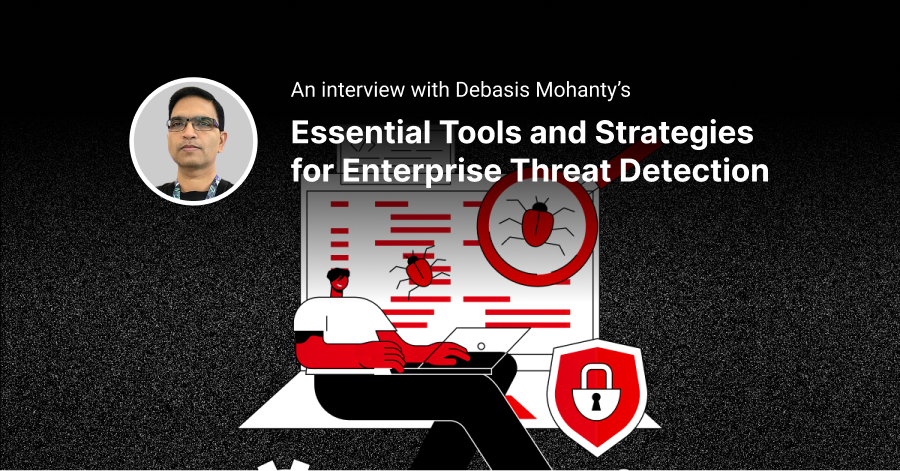How can we safeguard our networks and devices from persistent threats?
What risks do attackers pose to our business, employees, and customers?
How can we adapt quickly enough to stay ahead of malicious actors?
Answering these questions has become more complex, especially as traditional cybersecurity methods struggle to keep up with modern attack vectors. Organizations need a smarter, more proactive approach to protect their assets and operations effectively.
At its core, SIEM combines advanced detection, analytics, and response capabilities to give organizations comprehensive visibility into their IT ecosystems. It empowers security professionals to detect, investigate, and mitigate threats across cloud services, endpoints, networks, and beyond.
What is a SIEM in Cybersecurity?
SIEM has been around since the early 2000s when businesses started recognizing the need for a smarter approach to handling the sheer volume of security data being generated. Initially, it was all about logs—gathering them in one place and making them searchable. Over time, as cyberattacks grew more sophisticated, SIEM evolved into something much more powerful. It began offering real-time threat detection, correlation of seemingly unrelated events, and even tools to help organizations meet compliance requirements.
Today’s SIEM systems are far from the rule-based engines of the past. They use advanced analytics and artificial intelligence to pinpoint risks faster, minimize false positives, and even recommend next steps for security teams. For organizations, this means less time spent drowning in alerts and more time focusing on what really matters—staying ahead of cybercriminals.
Whether it’s identifying suspicious login patterns, detecting a malware outbreak, or meeting regulatory standards, SIEM has become a cornerstone of modern cybersecurity, giving teams the visibility they need to protect their business in an increasingly complex digital world.
How DOES SIEM Work?
In general, SIEM:
- Collects and aggregates data from multiple sources,
- Correlates and categorizes events,
- Identifies deviations from the norm, and
- Raises real-time alerts about security incidents and events
works by effectively combining and leveraging two key capabilities –
Security Information Management (SIM) and Security Event Management (SEM)
. The SIM side collects data for analysis from log files, host systems, applications, and even security devices like firewalls and anti-virus software. The SEM element, on the other hand, monitors systems in real time and identifies, correlates and analyzes events that seem anomalous. These events can include everything from malware attacks and spam emails, to traffic spikes, failed logins and changes to security configurations. Thus, a SIEM software can identify and detect threats in email, endpoint devices, applications, cloud resources, and more.
In addition to behavioral anomalies, SIEM can also detect and raise alerts about compromised accounts and lateral movements. These alerts can be set as high- or low-priority, so security teams can focus on addressing the critical threats (or events) that could seriously impact the organisation in adverse ways. SIEM also generates reports on these security threats and events by leveraging threat intelligence and User and Entity Behaviour Analytics (UEBA).
KEY Benefits of SIEM SOLUTIONS
- Analyze network and user behaviors in order to generate useful intelligence about potentially malicious activities
- Detect and mitigate incidents early to minimize their damaging impact
- Create threat rules based on insights into attacker tactics, techniques and procedures (TTPs) and known indicators of compromise (IOC)
- Notify security personnel if an event triggers a SIEM rule
- If incidents do occur, determine their nature and understand their business impact
- Identify, isolate or remove compromised sources
- Perform forensic analysis on major security/data breaches
- Generate visual information so teams can identify patterns that could indicate security issues
Common SIEM Use Cases
Evolve On-demand SIEM and EDR Capabilities
The Evolve SIEM solution can be orchestrated at the click of a button for immediate protection. Plus, it can be easily scaled up (or down) to support the organization’s changing environment and security needs.
With built-in standards like PCI-DSS, HIPAA and FedRamp, Evolve visualises compliance gaps and allows for fast remediation. It also lowers security costs with flexible monthly investments and almost no capital expenditures or expensive integration projects.
Start a 30-day free trial here.
Improve Threat Hunting, Detection and Management
The use of intelligent products like
Evolve provides visibility into the threat environment, so organisations can better manage the operational and strategic aspects of threat hunting. With multi-source log data, these products can streamline threat management workflows and also improve incident response.
Enterprise Compliance
SIEM software provides the advanced, ongoing and reliable monitoring and reporting capabilities organizations need to auto-generate reports about logged security events. These reports enable them to meet numerous compliance mandates like HIPAA, SOX, GDPR, and PCI-DSS, and improve their compliance management.
Increase IoT Security
It is estimated that by 2025, there will be
25 billion connected IoT devices. As more devices, from washers and dryers to thermostats and printers become connected, however, this creates more points of entry for bad actors to target enterprises and move laterally across their networks. That raises serious concerns about security in IoT setups. SIEM software can mitigate IoT threats, such as DoS attacks, and also raise alerts about at-risk or compromised devices.
Prevent Insider Threats
Insider threats pose a considerable risk to organizations. With SIEM, they can create rules for what constitutes “normal” employee activity. The software will then monitor employee actions, and raise alerts for irregular events based on these predefined baselines. SIEM can also monitor privileged accounts and create alerts if a particular user performs an action they’re not allowed to perform, such as installing non-standard or non-approved software.
THE FUTURE OF SIEM: EVOLVING THROUGH AI AND MACHINE LEARNING
As cyber threats grow more sophisticated, the future of SIEM is being shaped by AI and ML. These technologies are not just incremental upgrades; they are redefining how SIEM systems operate, making them more adaptive, efficient, and intelligent.
SMARTER THREAT DETECTION AND BEHAVIORAL INSIGHTS
AI and ML are enabling SIEM solutions to move beyond reactive monitoring to predictive threat detection. Using algorithms trained on vast datasets, modern SIEM platforms can identify unusual behaviors, such as deviations in user or entity actions, with remarkable accuracy. These insights allow security teams to detect advanced threats, like insider attacks or zero-day exploits, that traditional systems might miss.
For example, anomaly detection models can flag a user's sudden access to sensitive files at unusual hours or a spike in data exfiltration from a specific endpoint. By analyzing patterns over time, ML-driven SIEM tools continuously learn and improve, reducing false positives and enhancing threat prioritization.
REAL-TIME DECISION-MAKING
One of the most exciting developments in SIEM is the integration of prescriptive analytics and autonomous responses. ML models can analyze security events in real time, provide actionable insights, and even initiate automated responses without human intervention.
For instance, if a ransomware attack is detected, an AI-powered SIEM can isolate the affected system, block further file encryption, and notify the security team—all within seconds. This capability minimizes damage and reduces response times dramatically, addressing one of the most critical pain points in cybersecurity today.
AUGMENTING HUMAN ANALYSTS WITH AI ASSISTANCE
Rather than replacing human security teams, AI in SIEM is evolving to act as a force multiplier. By automating repetitive tasks, such as log correlation and basic threat analysis, AI frees up saves valuable time, which analysts can redirect toward high-value activities like investigating sophisticated threats, refining detection rules, or strategizing long-term security improvements.
A common frustration among analysts is dealing with minor issues that don’t require their expertise but still consume significant time. One of our team members shared how he once spent hours troubleshooting a client-side ticket that turned out to be a non-issue. Situations like these are precisely where AI excels—by handling the mundane, it ensures that skilled professionals are not bogged down by tasks that don’t leverage their expertise.
Additionally, advanced AI features like natural language processing (NLP) allow analysts to interact with SIEM systems conversationally, quickly querying for insights or reports without navigating complex dashboards. The result? Analysts are better equipped, more efficient, and less prone to burnout—critical benefits in an industry known for high pressure and persistent talent shortages.
ADAPTIVE SECURITY POSTURES THROUGH AI-POWERED FORECASTING
The use of AI in SIEM isn’t just about reacting to threats; it’s also about proactive defense. Predictive analytics, fueled by ML, allows organizations to model potential attack vectors based on current trends and emerging threat intelligence.
For example, by analyzing global threat feeds and internal data, an AI-driven SIEM could alert organizations to vulnerabilities in their IT environment that attackers are likely to exploit next. This foresight empowers organizations to harden defenses before an attack occurs.
The future of SIEM lies in its ability to leverage AI and ML to provide smarter, faster, and more proactive security.






